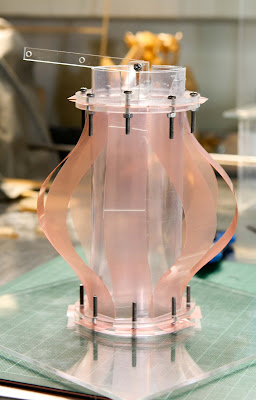Interactive MTR station
The passengers waiting in an MTR station can interact with the passengers inside MTR though this interactive system to let them know which carriage has less people, so they know where to wait. The system performs this task spatially without signage or iconography by literally changing the space to suggest where people should stand to wait. People can also push the frames together to send to the controle centre a request of arranging more trains. Last but not least, the interactive station also provide a new experience of waiting by allowing passengers to share digital information on the frames, literally turning it into a digital graffiti wall.
2009年4月5日星期日
Interactive MTR station
2009年3月25日星期三
2009年3月9日星期一
2009年3月6日星期五
2009年3月4日星期三
Concept modification
The original concept is about using fames to deliver the information inside the MTR to the people waiting in the station. The people enter the station could know which carriage have less people by one glance of those frames. And also because the more people in this carriage, the frames in the waiting area will come out more, which means the space for waiting will be less and less people could wait here.
After 2 meetings, we all agree that the suggestion from Michael is a good one. People could push the frames to give a message to the controlling centre that this waiting space is really full now. So the controlling centre could send out more MTR to at this period of time, which means the MTR system working in a flexible and reactive way.
(Photoshop-People pushing the frames)
Even though, we still think the concept is not rich enough, so kept discussing and finally comes out an idea about using sharing to strengthen the identify of this stop and provide people a happy instead of boring traveling experience. This sharing system enable travelers to upload interesting stuff like photos to the centre database, and these stuff will be projected inside the carriage and the frames in the next stop. We believe this system could work really well in the context of
(Photoshop-Disneyland images projected on the frames)
The model we are going to make
We are going to implement the part that when people inside the MTR move, the frames also moves, some blend more and some blend less, so the whole station like a living thing.
(Photoshop-frames moving)
When the MTR is arrive this station, the frames become flat one by one following the speed of the arriving MTR, so when the MTR stops, the whole station will become a normal station with no frame blending out.
(Photoshop-half of the frames become flat as half of the MTR reach the station)
2009年2月26日星期四
Assignment Two Interactive MTR station



The picture show how mass the MTR station is and we definitely need a new MTR station to improve this traveling experience. This project aims to connecting the people inside the MTR and waiting in the station through an Interactive MTR station. When people are able to communicate, we believe the space could be organized and people have chance to change from suffering enjoying. For example, the system can detect how many people are in each carriage, and make this information visible and deliver to the people waiting in station, and also the waiting area can be shaped and transformed according to this information. In this case, the users are leaded into the carriage with less people and avoid crowd, so the experience will easily be improved and the users will enjoy this trip more.
Application Design Worksheet:
The Hong Kong passengers in the context of waiting in MTR or train station is expected to interact with the passengers inside MTR or train though the interactive station as a way to lead people to those carriage have less people.
What are the factors that the system is responding to: (Data Sets)
1) Direct Physical interaction with the station
2) Direct Virtual user interaction via the station information system
3) Human Activity of a particular group in a particular place (input data sets)
Practically what does it do?
System is networked to understand and react collaboratively. The information of the passengers inside the MTR or train and the passengers waiting in the station can be exchanged. The information is mainly about how many are they and what are their positions.
Understands occupant location definition
The system should understand how many people there are in each carriage and where are they stand, and transform this information into intuitive visible signal to inform the people waiting in station
Provide flexible infrastructure
There are frames in the station which can be bend out in order to indicate how many people is inside each carriage and what are their positions, and to shape waiting area with reasonable size in front of each carriage.
How does it do it?
Wireless data transfer to central control room
Motion or IR sensors or
Footfall identification with touch sensors
Kinetic transformation
































